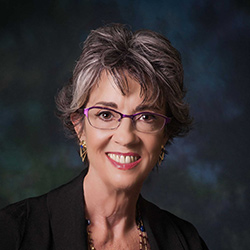How can we get elementary school children to proclaim proudly that they want to “help older people” when they grow up?
What do you want to be when you grow up?
We all remember being asked that question as youngsters. Back then, my friends and I wanted to be doctors, nurses, and teachers. The more adventurous among us thought we’d be happy as police officers or fire fighters.
I doubt we based these choices on our unique gifts or interests. Instead, our career dreams were closely tied to the relationships we had with people in our community.
We respected our family doctor, our school nurse, our teachers, and the civil servants who worked in our neighborhood. And we wanted to be just like them. It was as simple as that.
These childhood memories came flooding back to me during a recent workforce summit sponsored by LeadingAge Ohio.
The summit focused squarely on the challenges that providers of long-term services and supports (LTSS) face in filling today’s vacancies and retaining today’s workers. But we also spent a good deal of time talking about how to recruit and retain workers of the future.
Asking little kids what they want to be when they grow up – and influencing how they answer that question – could be our best tool for reaching that goal.
PLANNING FOR TODAY AND TOMORROW
LeadingAge Ohio has been working hard to help its members address their growing workforce challenges. An “Employer of Choice” initiative helps members become certified – and market themselves – as organizations where people want to work. A traveling training program helps members reduce turnover among frontline workers by strengthening the leadership skills of their supervisors.
Despite these great steps forward for LeadingAge Ohio, its President and CEO Kathryn Brod can’t stop thinking about the children.
Kathryn envisions a not-so-distant future when elementary school children will proclaim proudly that they want to “help older people” when they grow up.
She believes that we’d hear that answer a lot more frequently if youngsters had more opportunities to develop relationships with older people in their communities. She sees the Council for Life Long Engagement at Episcopal Retirement Services, which engages residents with students in local schools, as a great model for building relationships that will help kids develop a greater appreciation of and more respect for elders – and an interest in choosing a career in the field of aging.
Kathryn’s vision really resonates with me. But how do we get there? The workforce summit in Columbus offered a few good ideas:
- Involve a diverse set of stakeholders. Creating a future pipeline of LTSS workers is a challenging task that providers can’t tackle by themselves. That’s why there was such a diverse group of participants at the Ohio workforce summit. We’ll need to engage all of these stakeholders – government officials, state legislators, educators, researchers, community-based organizations, and providers – if we’re going to convince young people to come work with us.
- Pursue multiple solutions. Our workforce crisis is complicated, and solving it will take a variety of approaches. A living wage, good training, and supportive work environments are critical. But we also have to think seriously about how to transform “direct-care jobs” into “caregiving careers” that society will respect and young people will pursue.
- Promote our value as employers. Ryan Burgess, Ohio’s director of workforce transformation, told summit participants about the state’s aggressive efforts to create new jobs for the 21st century. I pointed out that the LTSS sector, which offers careers in medical, social, and environmental services, could give young Ohioans some pretty awesome job opportunities. We know our organizations can help build local job markets and economies. We just have to do a better job of promoting that value.
- Engage with new partners. Burgess urged LeadingAge Ohio members to get more involved in education by fielding candidates for local school board seats, and helping high schools align their curricula with the needs of local employers. This kind of engagement in education is really important to the future of our field.
ARE CHILDREN THE KEY TO OUR SUCCESS?
I was especially intrigued by a summit presentation from Learn to Earn Dayton (L2ED), a community-based program that exposes school-age children to careers in a variety of fields, including health care.
L2ED offers 9-week courses focusing on in-demand careers for Dayton students in grades 6-8, and career planning courses for high school students. But its career education begins with students in kindergarten through grade 5. Cartoon characters have a starring role in the “I Can Be Anything I Want to Be” campaign, which promotes an “A to Z” list of careers, and explains – in language kids understand – why those jobs are so “cool.”
The Dayton initiative has taken a page out of the Sesame Street playbook, and it seems to be working. I wonder what would happen if LeadingAge members took a similar approach to “selling” LTSS jobs to the younger generation.
We might not be able to come up with a complete “A-to-Z” list of careers in the field of aging. But I’m sure we can take an engaging and educational approach to helping young people see aging services as a “cool” career choice that offers opportunities for professional advancement, personal satisfaction, and community service.
Move over Big Bird. We’ve got an important message that youngsters need to hear.

Robyn I. Stone, DrPH, is senior vice president of research at LeadingAge, and co-director of the LeadingAge LTSS Center @UMass Boston. Her widely published work addresses long-term care policy and quality, chronic care for people with disabilities, the aging services workforce, affordable senior housing, and family caregiving.
